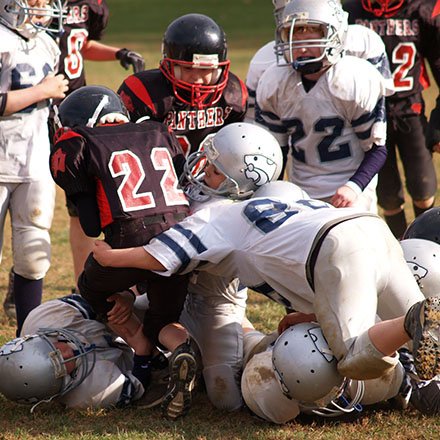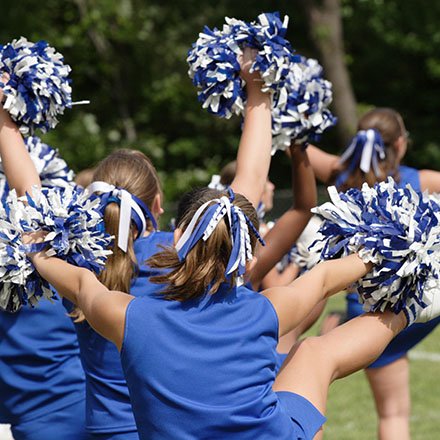Why A Youth Sports Safety Program is Important
A doctor was covering at a high school football game when a sophomore reserve got knocked unconscious temporarily. The doctor did the routine tests, recognized signs of a possible concussion, and ruled the player out for the rest of the game.
A short while later, the surgeon heard a commotion at the fence behind him. A man and a woman were screaming in his direction, demanding to know why their son had not returned to action. The doctor went to explain, and what he learned illustrates how far the effort to establish standards for youth sports safety still must travel.
Both parents were neurologists.
The pressure to play through pain is real. This kind of scenario occurs at school fields, community parks, and recreation centers across the country. An estimated 3.5 million children receive medical treatment for sports injuries annually. An ESPN survey found that 87 percent of parents worry about the risk of injury, with concussions their most significant concern.
Injury concerns aren’t the only threat to youth sports participation, which has declined significantly since 2008. The U.S. Center for SafeSport reports that 40-50 percent of young athletes have experienced anything from mild harassment to severe abuse and that sexual abuse impacts 2-8 percent of all athletes.
Injury prevention and personal protection are the twin pillars of safety, the foundation of youth sports. Injuries are a part of the game, although the Centers for Disease Control and Prevention estimates that half of injuries are preventable. Personal protection involves the apparent protection from sexual abuse but also addresses physical and emotional misconduct. In addition, it involves being prepared for emergencies.
Young people who participate in sports do better physically, socially, emotionally, and academically than their counterparts. The research is undeniable. If we can’t keep our young athletes safe, we won’t keep them in the game. If you don’t experience these benefits at a young age, you’re less likely to do so as adults, and the cost to our nation’s health and well-being will continue to rise.
The National Council for Youth Sports believes that youth sports safety should be a national priority. That’s why NCYS has embarked on a multi-year strategy to provide youth sports stakeholders with the best-in-class resources needed to keep our children safe so they can get active and stay healthy and safe. For youth sports to realize their full potential to have a lasting impact on individuals, families, communities, and our country, safety has to come first.
National Council of Youth Sports’ vision is to develop a coalition of like-minded organizations and subject matter experts to provide resources and tools to keep our athletes safe. We will begin with a series of safety-related blogs and digital content that will appear Tuesdays and Thursdays as we prepare for the 2022 National Youth Sports Week, October 24-29th. This blog series will culminate with a safety webinar held jointly by NCYS and the National Center for Safety Initiatives (NCSI) on Safety Day held October 27th. We urge you to save the date and learn more about our day-to-day activities at National Youth Sports Week (NYSW) | National Council of Youth Sports (ncys.org)
The good news is that many experts in their fields have developed practical, accessible resources designed to address the fundamental need for injury prevention and personal protection in the youth sports space. In addition, NCYS has partnered with several organizations to get those resources into the hands of the people who need them most: youth sports parents and caregivers, coaches, and administrators.
Our goal is threefold: 1) increasing awareness of safety-related issues, 2) strengthening youth organizations’ capacity to respond to suspicions of injury prevention and personal protection, and 3) driving the implementation of policies and promising practices.
We’re on a mission to make youth sports safer. The upcoming content will address a comprehensive safety approach with topics addressing policy guidance, background screening, abuse prevention, legal compliance, training & education, and protection of personal and financial information, just to name a few.
Over the coming weeks and months, you will find new safety resources from our partners, including:
▪ The NCYS Health & Safety Advisory Council is a newly formed panel of 12 experts in various fields such as sports medicine, youth development, mental health, and sports science, has just begun to create, assess and curate content, including an “Ask the Expert” online interaction.
▪ The American Orthopaedic Society for Sports Medicine (AOSSM) developed the STOP Sports Injuries resources, a collection of sport-specific and injury-specific tip sheets designed to prevent and address acute and chronic injuries. Another NCYS partner, SportsEngine, shares the tip sheets with families who register with youth sports programs across the country.
▪ National Center for Safety Initiatives is the only background screening program endorsed by NCYS. NCSI, the official background screening provider of more than 50 National Governing Bodies, offers services that comply with the Safe Sport Act.
▪ PRIVIT is the leader in health and sports safety communications for sports organizations. Its platform automates a process for secure digital storage, allows team officials to oversee compliance properly, monitors special medical conditions, distributes educational health content, and securely communicates incidents across an organization.
▪ Saprea exists to liberate individuals and society from child sexual abuse and its lasting impacts. It provides research-based best practices to reduce the risk of sexual abuse and education and support to help survivors with the healing process.
▪ SportsEngine provides turn-key solutions to protect youth athletes and organizations.
I’m calling on influential organizations to spotlight the critical importance of youth sports safety by using and sharing best-in-class resources. We need you’re your help in collective joining together. Without intervention, there will be:
▪ Fewer youth sports participants
▪ Fewer youth receive health and youth development outcomes
▪ Less healthy youth, more disease, and increased healthcare costs to the tune of $3T
▪ Fewer social/emotionally adjusted youth and more crime
▪ Fewer global leaders, decreased national security, and continued erosion of our military readiness
Safety is foundational to the youth sports experience, and protecting young people should be our collective top priority. These core beliefs guide us at NCYS as we strive to provide essential resources to turn awareness into action and challenges into success stories. We want to help all youth sports organizations strengthen safety’s twin pillars of injury prevention and personal protection.
Wayne B. Moss
NCYS Executive Director




